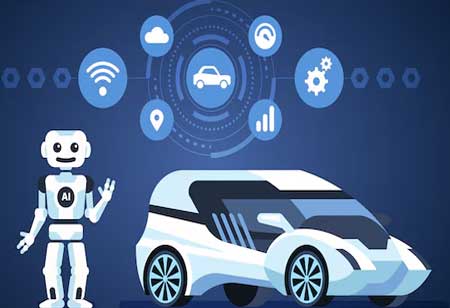THANK YOU FOR SUBSCRIBING
THANK YOU FOR SUBSCRIBING
Be first to read the latest tech news, Industry Leader's Insights, and CIO interviews of medium and large enterprises exclusively from Auto Tech Outlook

By
Auto Tech Outlook | Wednesday, August 20, 2025
Stay ahead of the industry with exclusive feature stories on the top companies, expert insights and the latest news delivered straight to your inbox. Subscribe today.
Fremont, CA: Artificial intelligence (AI) is paramount in the development and success of autonomous vehicles (AVs). AVs can sense their environment, make informed decisions, and navigate complex traffic situations with little human input. By incorporating AI, autonomous vehicles transform the automotive industry, providing notable safety, efficiency, and mobility advantages. The key function of AI in these vehicles is to power sophisticated perception systems that help the vehicle comprehend its surroundings.
AI algorithms enable the vehicle to determine whether to slow down, stop, or accelerate when approaching a crosswalk with pedestrians. AI helps AVs navigate complex intersections, roundabouts, and highways, ensuring smooth transitions between driving conditions. AI’s ability to continuously learn and adapt allows AVs to improve over time. As autonomous vehicles encounter new driving situations, AI algorithms analyze the experiences, update their knowledge base, and refine decision-making processes, leading to safer and more efficient driving behaviors.
The most significant benefit of AI in autonomous vehicles is its potential to improve road safety dramatically. Human error is responsible for most traffic accidents, often due to distractions, fatigue, or impaired judgment. AI-driven autonomous vehicles eliminate human factors by relying on precise, data-driven decisions. AI can detect hazards, such as a sudden stop in traffic or a pedestrian stepping onto the road, and respond with immediate corrective actions to avoid collisions. AI algorithms can optimize driving patterns to reduce fuel consumption or energy use in electric vehicles (EVs).
AI can predict and plan the most efficient route by considering traffic conditions, road inclines, and weather. It can manage battery usage, optimize charging schedules, and even integrate with smart grid systems to balance energy consumption and reduce transportation’s environmental impact. Autonomous vehicles can optimize acceleration and braking patterns, minimizing unnecessary stops and starts contributing to higher fuel consumption and emissions. With AI handling driving tasks, autonomous vehicles can provide reliable and safe transportation to people who may otherwise have difficulty navigating the road.
AI-powered ride-sharing services, for example, can improve accessibility by providing on-demand transportation that adapts to passengers’ specific needs. Autonomous vehicles also help bridge the gap in underserved areas with limited public transportation options, making mobility more inclusive. AI systems can predict and avoid traffic bottlenecks by rerouting vehicles to less congested roads or adjusting speeds to smooth traffic flow. Over time, the widespread adoption of AI-powered AVs could lead to fewer traffic jams, reduced commute times, and better overall traffic management.
AI can help develop more intelligent traffic signals that adjust based on real-time traffic conditions, improving road network efficiency. Integrating AI in autonomous vehicles offers significant cost savings, particularly in the logistics and transportation industries. Self-driving trucks, for example, can operate continuously without the need for breaks, maximizing delivery efficiency and reducing labor costs. AI can optimize routes, reduce fuel consumption, and minimize vehicle wear and tear, lowering maintenance costs.
 Copyright © 2025 AutoTech Outlook. All Rights Reserved | Privacy Policy | Subscribe | Sitemap | About us | Feedback Policy | Editorial Policy
Copyright © 2025 AutoTech Outlook. All Rights Reserved | Privacy Policy | Subscribe | Sitemap | About us | Feedback Policy | Editorial Policy 



